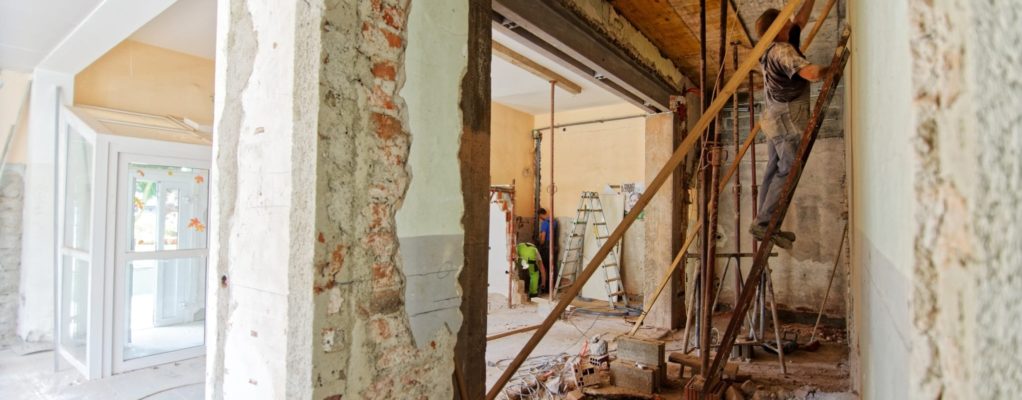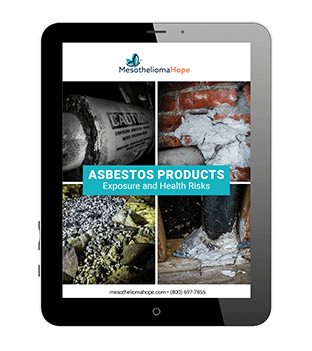We’re all familiar with do-it-yourself (DIY) TV shows and see the risks involved when you take matters (and hammers) into your own hands. From burst water pipes to unsafe scaffolding, DIY isn’t for everyone. But there is another risk that many DIYers are not aware of—asbestos home renovations.
Asbestos was a widely used building material before the 1980s as it was cheap, reliable and easy to find. Lots of houses built before 1980 will, to this day, most likely contain asbestos, whether as insulation or to prevent against heat and fire. It was considered an excellent building material due to its heat, electrical and chemical-proof qualities, but medical reports have since found a definitive link between asbestos exposure and mesothelioma—a cancer caused by the inhalation of asbestos particles.
Asbestos itself is not dangerous when it remains intact, but problems occur when the fibrous forms become disturbed and begin to break up. During house renovations, many people don’t realize that they could be drilling into walls that contain asbestos cement or drywall, which would disperse the particles, sending them airborne. Once asbestos is inhaled, there’s a risk for mesothelioma to develop.
Rates of Asbestos Exposure in Home Renovators
An Australian study by professor Anthony Joshua found that 60.5% of DIY renovators reported being exposed to asbestos during renovations. A shocking 53% said that their partner had also been exposed, and 40% reported that their children might have come into contact with asbestos as a result of renovations.
One of the most common asbestos-containing products to come across during DIY house renovation is fibro sheeting. These flat, corrugated sheets can be found in ducts, pipes, roofing shingles and more. Asbestos sheets are commonly cut or disposed of during a renovation, but merely moving the sheets without the correct breathing apparatus could severely put you at risk of developing mesothelioma.
A man in Sydney, Australia, died from mesothelioma 40 years after building an extension on his house using fibro cement bought from a hardware store. His family continues to worry about their own health as they were also in the same house at the time that the extension was built and could, equally, have inhaled asbestos fibers.
Once considered a miner’s disease, mesothelioma is now being diagnosed in victims who, primarily, come into contact with the substance through their DIY efforts around the house.
DIY Shows and Asbestos Home Renovations
The trouble is that DIY shows glamourize the idea of tending to odd-jobs that, ideally, need professional attention. With more people wanting to flip houses or remodel their homes, the temptation to save money by doing it all yourself is alluring. A quick Google search will tell you everything you need to know about removing old ceiling tiles, but if your home was built before the 1980s, seek professional help to ensure that you’re not putting you and your family at risk.
Health risks aren’t the only concern when it comes to DIY and asbestos. Many homeowners who take inspiration from DIY shows are also unaware of the legal requirements when it comes to removing asbestos. Due to the fragile nature of the fibers, asbestos cannot be disposed of in your garbage or dumped illegally. Instead, asbestos must be removed by a certified specialist. Failure to do so may result in fines or even criminal charges for violating asbestos removal regulations.
Stay Informed About DIY and Asbestos Risks
Doing DIY around the house may feel great, but none of these TV shows seem to highlight the risks associated with finding asbestos during renovations. Should these TV shows be more responsible when it comes to asbestos and educate viewers on the harm it can do, or would it negate the idea of a do-it-yourself show?
Remodeling suppliers could also play a more active role in enlightening consumers on the widespread use of asbestos and why it’s essential to hire the correct people—not only for the health of your project but for your personal health too.
If you fancy yourself a DIYer but suspect you may have asbestos in your home, it’s important to hire a qualified testing company to take samples before any renovation work can go ahead. Contact your state and local health departments, EPA regional office, and OSHA regional office to find out what regulations are applicable in your area.











